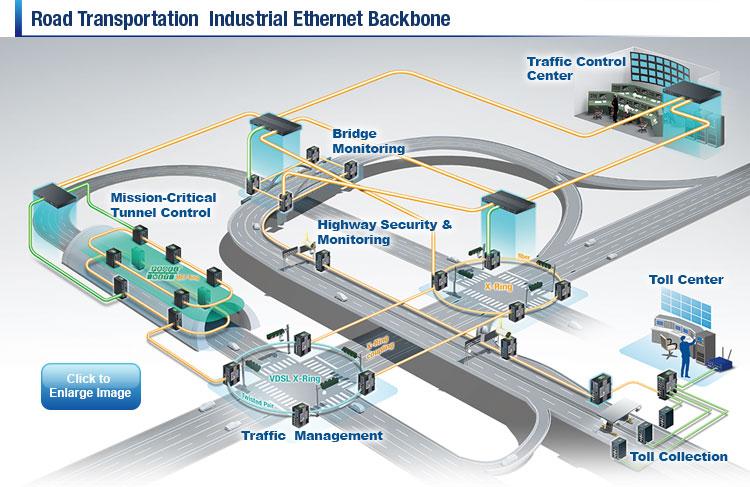In an era where urban congestion and road safety are growing concerns worldwide, cutting-edge technologies are revolutionizing traffic management systems. Advances in precision engineering, artificial intelligence, and real-time data analytics are enabling cities to optimize traffic flow, reduce accidents, and enhance commuter experiences. From intelligent traffic signals to automated monitoring tools, these innovations are transforming how authorities manage road networks, delivering smarter, safer, and more efficient transportation infrastructure. This wave of technological progress promises to reshape urban mobility and address longstanding challenges in traffic control.
Table of Contents
- Emerging Smart Sensor Networks Enhance Real-Time Traffic Monitoring
- Artificial Intelligence Drives Predictive Traffic Flow Optimization
- Integrating Autonomous Vehicles into Urban Traffic Systems
- Policy Recommendations for Implementing Next-Generation Traffic Technologies
- To Wrap It Up
Emerging Smart Sensor Networks Enhance Real-Time Traffic Monitoring
Advancements in smart sensor networks are transforming urban mobility by enabling real-time data collection and analysis across complex traffic environments. These wireless sensor networks integrate a variety of devices-from IoT sensor nodes to high-resolution cameras-delivering continuous streams of traffic details. The data is processed with cutting-edge image processing and deep learning techniques, allowing for rapid detection of congestion points, accident alerts, and dynamic traffic signal adjustments. This seamless flow of actionable intelligence empowers city planners and commuters alike, fostering safer and more efficient roadways.
Key benefits of these emerging systems include:
- Improved traffic flow management through predictive analytics
- Enhanced pedestrian safety by monitoring crosswalk activity in real time
- Reduced response times for emergency services via instant incident detection
- Data-driven urban planning powered by continuous environmental monitoring
As cities adopt these smart sensor networks, they edge closer to achieving intelligent, connected transportation infrastructures that adapt instantly to changing conditions, dramatically reducing congestion and improving overall travel experiences.
Artificial Intelligence Drives Predictive Traffic Flow Optimization
Leveraging sophisticated machine learning algorithms, traffic management systems are now anticipating congestion patterns before they manifest on roadways.By analyzing vast streams of real-time data – including vehicle counts, weather conditions, and ancient traffic trends – these AI-driven platforms dynamically adjust signal timings to ensure smoother vehicle flow. The result is a reduction in bottlenecks, shorter commute times, and less environmental impact due to decreased idling emissions.
Key benefits highlighted include:
- Improved accuracy in predicting traffic surges and incidents
- Adaptive responses that shift according to live traffic conditions
- Enhanced coordination between interconnected intersections and transit systems
- Data-driven strategies supporting urban planning and infrastructure advancement
Integrating Autonomous Vehicles into Urban Traffic Systems
Urban landscapes are on the brink of a transformative shift as cities begin integrating autonomous vehicles (AVs) into their traffic ecosystems. This integration demands sophisticated coordination between AV technology and existing infrastructure, fostering seamless traffic flow and enhanced safety. Smart traffic signals, real-time data analytics, and vehicle-to-infrastructure interaction systems collaborate to orchestrate movement, reducing congestion and emissions while optimizing travel times. This digital symbiosis supports not only private AVs but also public transit and freight, redefining urban mobility with a focus on efficiency and inclusivity.
City planners and technologists prioritize key elements for successful integration:
- Adaptive signal controls that respond dynamically to traffic patterns and AV data feeds
- Dedicated AV corridors designed to streamline routes and reduce mixed-traffic conflicts
- Robust cybersecurity frameworks safeguarding communication networks against threats
- Comprehensive policy frameworks ensuring equitable access and addressing ethical concerns
Collectively, these components work towards a future where urban transport is smarter and more lasting, turning traditionally chaotic city streets into orchestrated avenues of progress.
Policy Recommendations for Implementing Next-Generation Traffic Technologies
To ensure the successful adoption of next-generation traffic technologies, policymakers must prioritize a multi-stakeholder approach that promotes collaboration between government agencies, technology providers, and local communities. Key recommendations include establishing clear regulatory frameworks that foster innovation while safeguarding public privacy and data security.Additionally, investment in scalable infrastructure is critical to support the integration of AI-driven traffic management systems and connected vehicle networks. Policy frameworks should also encourage open data standards to facilitate interoperability and seamless communication across various platforms.
Equally crucial is crafting education and training programs aimed at city planners, traffic engineers, and first responders to maximize the benefits of emerging technologies. Supportive policies should encompass:
- Incentives for pilot projects that test autonomous traffic signal controls and adaptive traffic flow mechanisms.
- Funding dedicated to cybersecurity measures that prevent system vulnerabilities amid increasing digital integration.
- Community engagement initiatives to build public trust and awareness regarding the advantages and safeguards of automated traffic systems.
- Establishment of performance metrics to continuously evaluate the impact on congestion reduction, safety improvements, and environmental benefits.
To Wrap It Up
As cutting-edge technologies continue to reshape the landscape of traffic management, the prospects for safer, more efficient transportation systems grow ever brighter. From smart sensors and real-time data analytics to AI-driven control systems, these advancements are not only minimizing delays and reducing accidents but also paving the way for smarter cities and enhanced mobility. As authorities and industry leaders embrace these innovations, the road ahead promises a smoother, safer journey for all. The future of traffic management is here-and it’s driven by technology.

